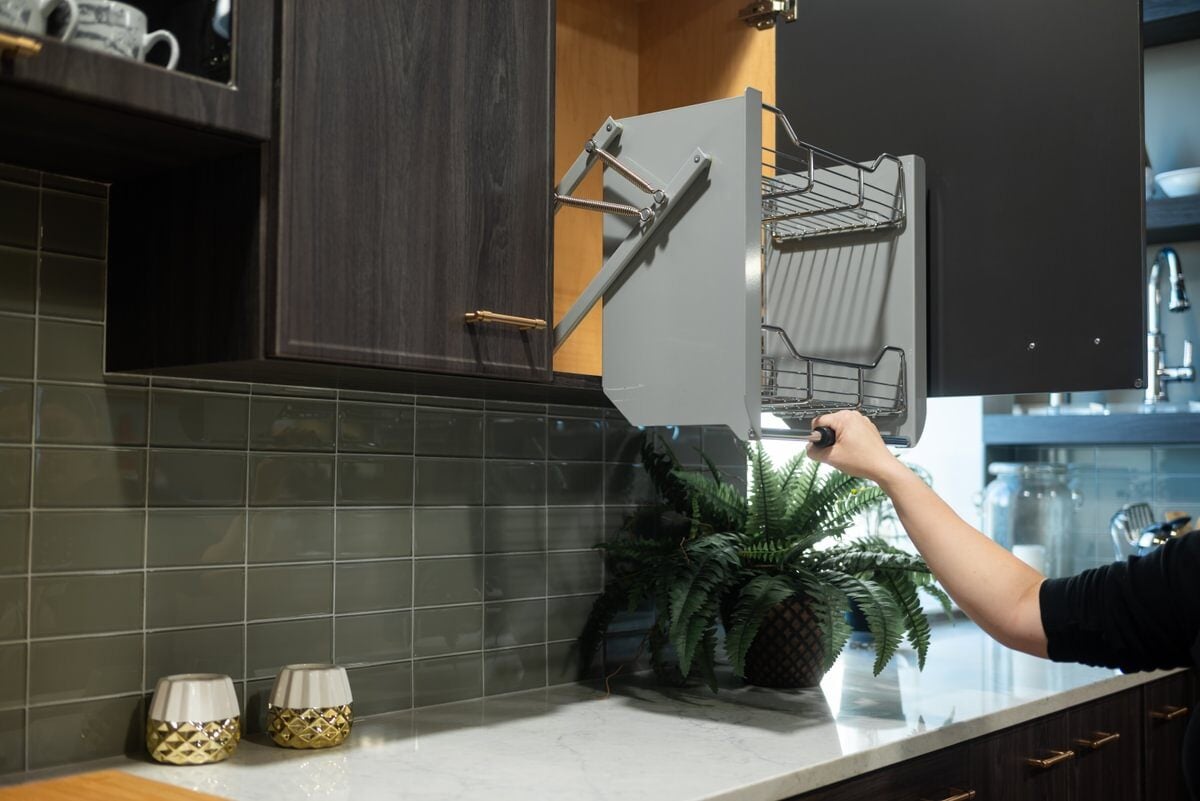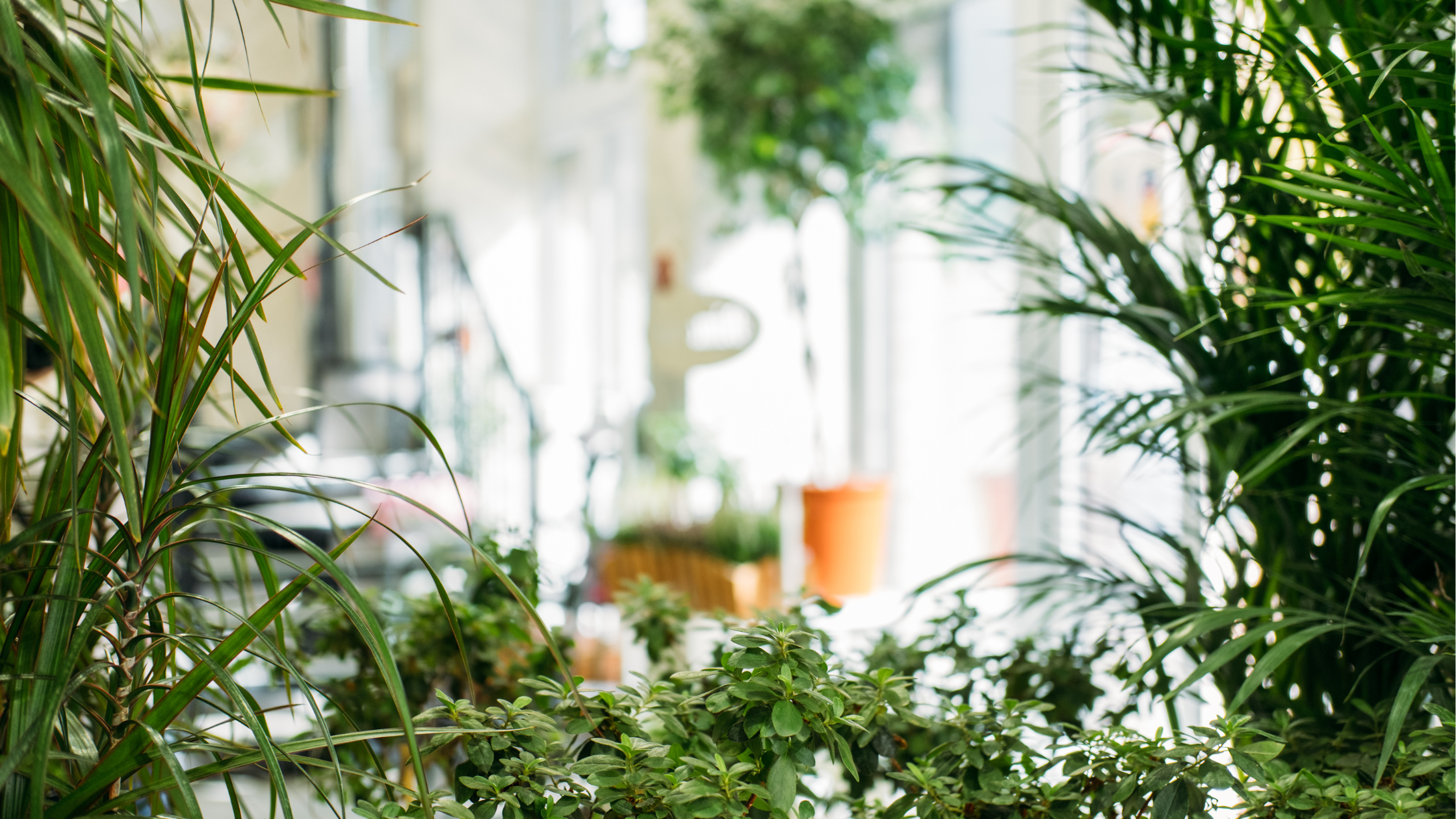
Interested in becoming more in touch with the outdoors? In the past decade, technology and home-comforts have fundamentally changed the way we interact with the outdoors. But getting in touch with the outdoors without a long weekend away in the forest is easier than you think. In fact, a new and trending design style is Biophilic Design, or the matter of bringing outdoor elements inside in new, creative, and innovative ways. Interested in delving deeper? We’ll cover everything you need to know to bring Biophilic elements into your home and your next kitchen remodel.
So, what is Biophilic Design? It’s an approach that purposefully intends to nurture and strengthen our connection with nature. From city to rural life, everyone could do with a bit more nature in their lives. By incorporating smaller elements over time, your home can feel like it’s that weekend getaway. It’s your opportunity to create your own little ecosystem.
Primary Elements of Biophilic Design
Now that you’re familiar with the general idea of Biophilic Design, let’s break down some principal attributes that you can expect to see with this style:
- All Natural: Like the name suggests, utilizing biophilic design choices means usingnatural materials.
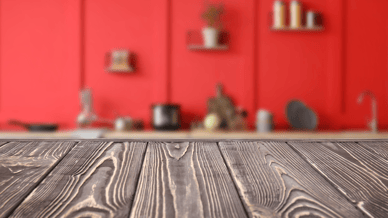 And with a plethora of options from something as abundant as nature itself, you have at your disposal an endless amount of inspiration and elements to include in your next remodel. You might find yourself gravitating towards unconventional countertop materials like sustainable wood, stone, or reclaimed materials. By incorporating these elements into your remodel, you’re able to bring a touch of nature indoors while providing personality and authenticity, versus a more clean-looking aesthetic that would come with synthetic materials.
And with a plethora of options from something as abundant as nature itself, you have at your disposal an endless amount of inspiration and elements to include in your next remodel. You might find yourself gravitating towards unconventional countertop materials like sustainable wood, stone, or reclaimed materials. By incorporating these elements into your remodel, you’re able to bring a touch of nature indoors while providing personality and authenticity, versus a more clean-looking aesthetic that would come with synthetic materials.
- Light it Up: Another cornerstone of biophilic
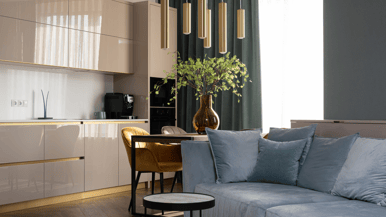 design is the usage of natural light. A kitchen designed with a biophilic-forward mindset will take efficient advantage of the use of windows, skylights, and other openings to flood the space with sunlight. Using natural light to your full advantage allows you to cut down on artificial lighting, saving you money on your energy bill while also creating a dynamic space that highlights the natural world.
design is the usage of natural light. A kitchen designed with a biophilic-forward mindset will take efficient advantage of the use of windows, skylights, and other openings to flood the space with sunlight. Using natural light to your full advantage allows you to cut down on artificial lighting, saving you money on your energy bill while also creating a dynamic space that highlights the natural world.
- Keep It Green: While some of these previous options
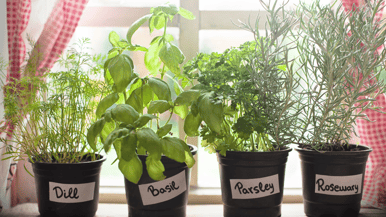 can be considerably big projects, an easy way to bring a biophilic mindset into your home is to incorporate living plants into the space. From hung herb gardens to potted plants or even vertical green walls, you’re able to infuse your kitchen with a breath of fresh air. Herbs can create an enriching and calming aroma and atmosphere in your kitchen while an assortment of plants can purify your air, helping you live your best life.
can be considerably big projects, an easy way to bring a biophilic mindset into your home is to incorporate living plants into the space. From hung herb gardens to potted plants or even vertical green walls, you’re able to infuse your kitchen with a breath of fresh air. Herbs can create an enriching and calming aroma and atmosphere in your kitchen while an assortment of plants can purify your air, helping you live your best life.
- Inspired Colors: The color palette of biophilic design
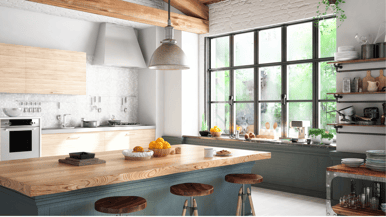 is inspired by nature. Try to incorporate earthy tones like greens, browns, or blues, that are reminiscent of the forest, oceans, or serene landscapes. If you’re looking to get even more creative, also play with the textures of your kitchen. Think about using natural wood grains or stone surfaces on anything from your countertops to backsplash or walls.
is inspired by nature. Try to incorporate earthy tones like greens, browns, or blues, that are reminiscent of the forest, oceans, or serene landscapes. If you’re looking to get even more creative, also play with the textures of your kitchen. Think about using natural wood grains or stone surfaces on anything from your countertops to backsplash or walls.
Biophilic Kitchen Design can even go beyond the aesthetic benefits as multiple studies have shown that utilizing natural elements in interior spaces can help in reducing stress, improving your overall mood, and enhance your overall well-being. Our daily lives can get stressful sometimes, and these design practices can offer you a sanctuary away from the hustle and bustle. But beyond your mental wellness, biophilic design practices can also help to purify your air, reducing toxins and increasing your oxygen levels, creating a healthier living space. And while natural light brings a peaceful atmosphere into your kitchen, it’s an energy efficient plus as well, ensuring a reduced carbon footprint.
And while we’ve touched on many of the cornerstones of biophilic design, you might be curious…how can you start bringing your biophilic kitchen to life right now? Firstly, consider what natural elements speak to you and get you excited to start your next kitchen remodel. Consider some unconventional but equally beautiful options that also boast sustainability, like bamboo, reclaimed wood, or recycled glass. By building off your primary materials, many other elements can start to fall into place. Try expanding and adding windows for natural light and select indoor plants that you can strategically place around your kitchen to catch and feed off of that newfound lighting. And aside from colors, textures, and lighting, you can also get creative with furniture, fixture, and artwork placement to build towards your aesthetic goals. Choosing furniture with organic shapes and natural colors or incorporating nature-inspired artwork is a great start to increasing your connection with nature.
While some might consider biophilic kitchen design a trend, it’s much more than that. It goes deeper into the way we create our living spaces, how we treat them, and in how we think about the world around us. You’re creating a space that’s not only functional but sustainable, enhancing your daily life and well-being. And especially for those who might feel disconnected from the outdoors, consider bringing some inside with biophilic design.




